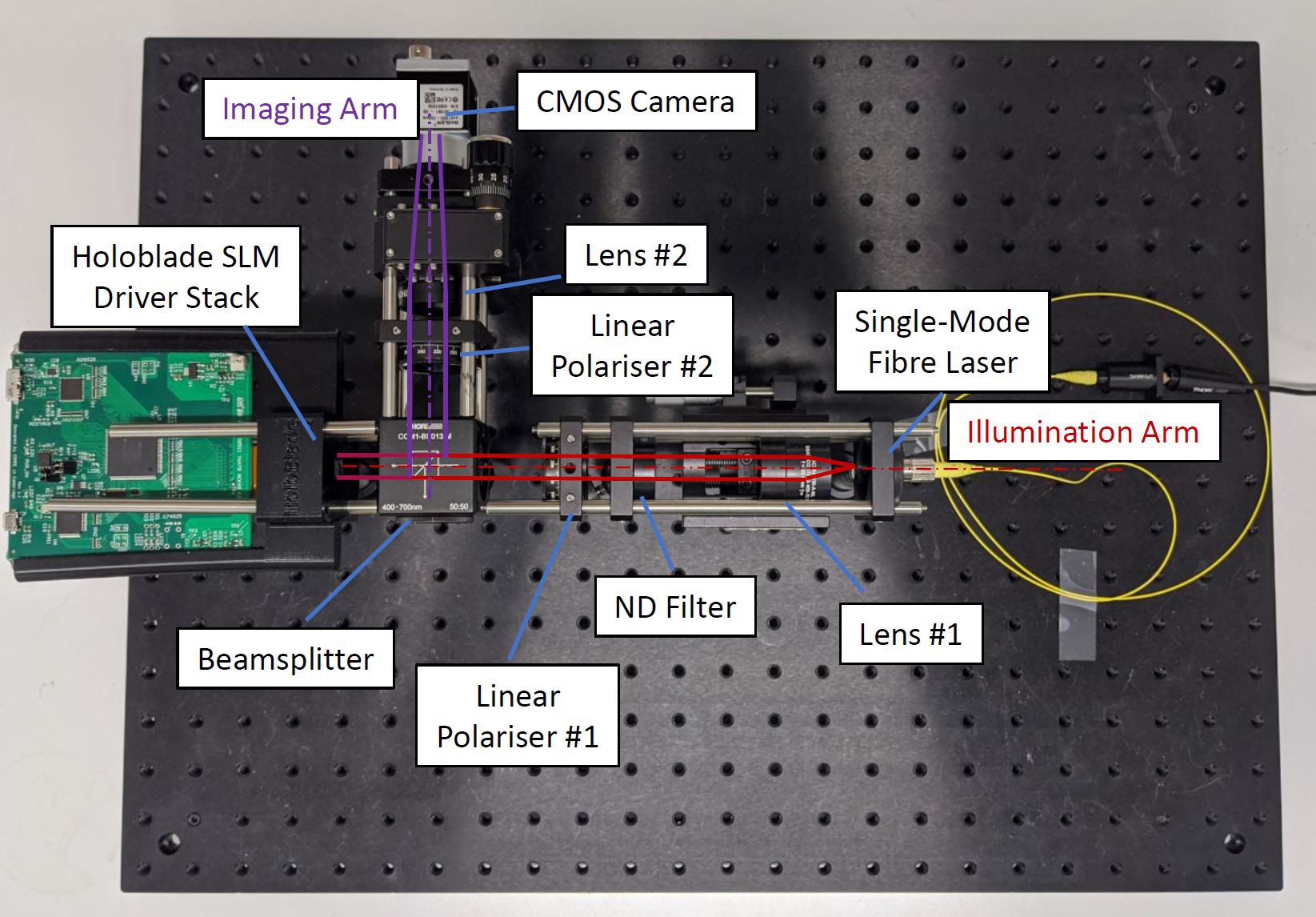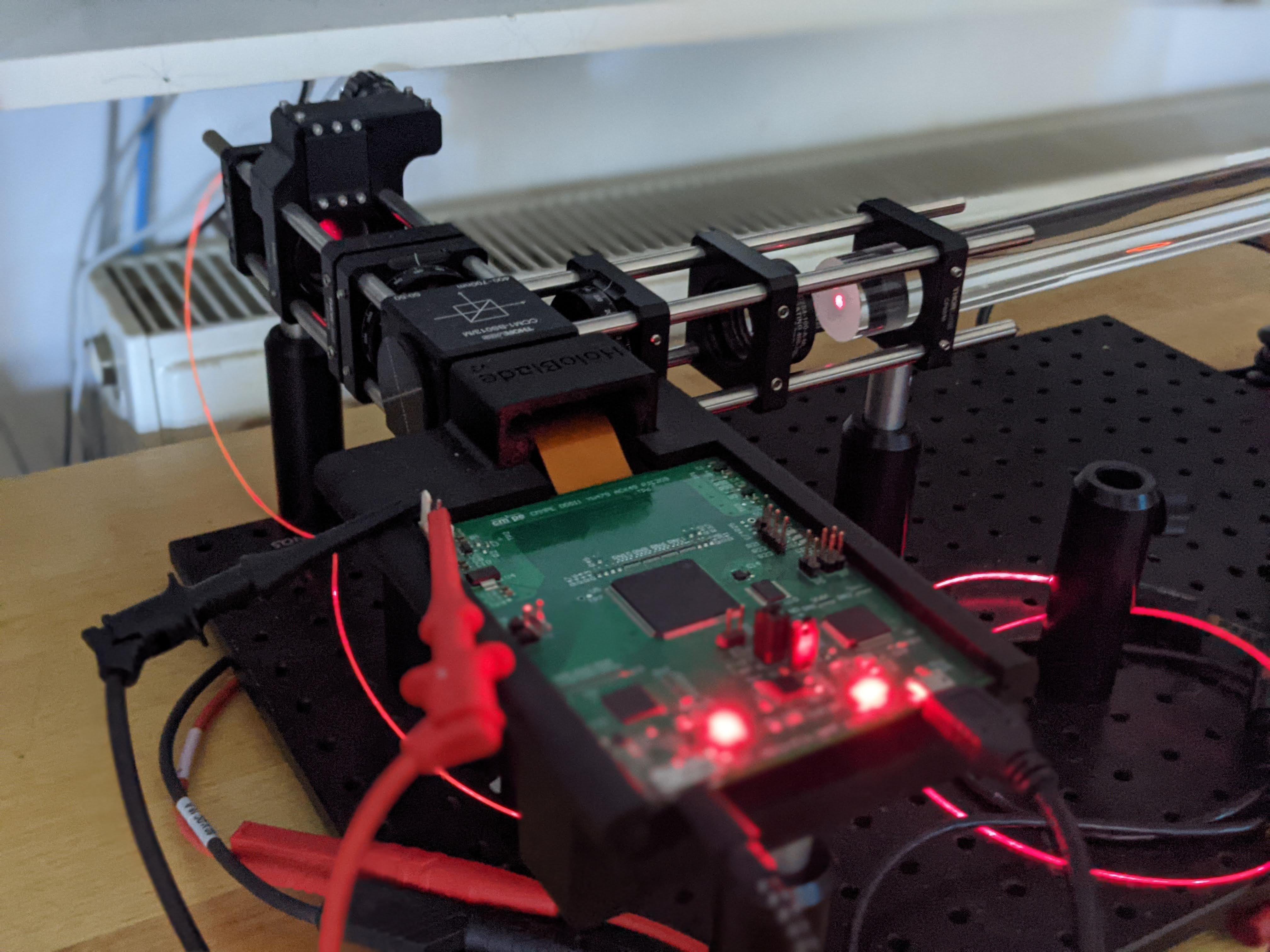The system uses a 4-F imaging system for the projection opitcs. This is a standard CGH approach where the SLM is placed at the fourier-plane of an imaging lens. This allows the display to produce a complex wavefront based on the the phase-retardation of the wavefront at the holographic plane.
The configuration can be seen below along with collimation optics and rotational polarizers (the particularl SLM used here only works with certain light polarisations as it acts as an electronically-switchable quarter-wave plate). A camera has been placed at the imaging plane in this configuration to provide accuracte sensing of the output replay field.

For the display system, a perspex pipe shall be placed at the output of the display. This shall act as the display-surface. This configuration can be seen below with a gaussian spot incident on the entrance-facet of the perspex waveguide:

Note that ths focus of this project is to produce a functional demonstrator prototype. The system size and footprint can be dramatically reduced but that is beyond the scope of this project (and tooling costs for optics are expensive!!).
 Andrew Kadis
Andrew Kadis
Discussions
Become a Hackaday.io Member
Create an account to leave a comment. Already have an account? Log In.